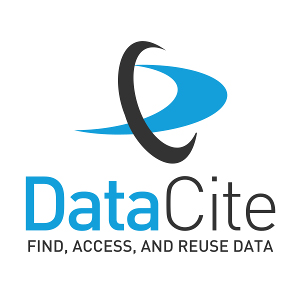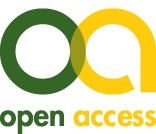Developing competencies in health informatics: Blended teaching method
Pauleen Mannevaara 1,2Kaija Saranto 2
Ulla-Mari Kinnunen 2,3
1 Arcada University of Applied Sciences, Helsinki, Finland
2 University of Eastern Finland, Department of Health and Social Management, Kuopio, Finland
3 Research Center for Nursing Science and Social and Health Management, Wellbeing Services County of North Savo, Kuopio, Finland
Abstract
The rapid development in health informatics has improved health outcomes but also poses challenges. Healthcare professionals need health information technology competencies for effective decision-making. This study aims to identify key health informatics competencies and proposes an educational structure to develop these competencies. A convergent design was used as a method for the interpretation of data from a scoping review and a focus group interview. The findings highlight challenges in health informatics pivots in management, interoperability, and patient care. A blended learning method including hands-on skills is suggested to develop health informatics competencies.
Keywords
education, health informatics competencies, healthcare
Introduction
The rapid growth of health information technology (HIT) has improved outcomes, services, and patient education in healthcare [1], but also introduced challenges for healthcare professionals. Limited information technology (IT) hinders effective use of informatics and contributes to feelings of incompetence and hesitance. As demand for health informatics (HI) expertise grows [2], HI becomes crucial for handling digital health-related responsibilities [3]. Although professional and technological competency levels vary across settings [4], HI education is essential for future professionals. Educational frameworks such as Technology Informatics Guiding Educational Reform (TIGER) [5], International Medical Informatics Association (IMIA) [6] and Kirkpatrick’s Four Levels of Training Evaluation Model [7] support this need. This study identifies key HI competencies for healthcare professionals and proposes an educational structure to develop them.
Methods
A mixed method study using convergent design analyzed data from a scoping review [8] and focus group interviews [9]. The scoping review included 28 English-language publications published between 2016 and 2020, analyzed via content analysis. The focus group interviews involved 21 health informatics professionals from Germany, Finland, and Portugal (informaticians n=3, IT specialists n=19, managers n=3, pharmacists n=2, physicians n=3, physiotherapists n=2, registered nurses n=7), with data examined using thematic content analysis. Themes and categories were based on TIGER educational framework domains and core competency areas.
Results
The challenges in HI revolve around knowledge and competencies related to direct patient care, IT-background [10] and management, including IT-supported management, change management and financial management in educational and professional settings [10], [11]. Additionally, competencies in documentation and fundamental computer science skills, competencies in data protection, data security and interoperability are essential [10].
Focus group interview examples:
“Nurses need to work with technology so they can build appropriate skills. For example, if they recommend patients use a specific app, they must also be familiar with how to use that app to adequately advise the patient.”
“I feel that documentation in patient work is one core part, and communication and reporting are maybe the priorities for maintaining patient safety.”
To implement these competencies, a blended teaching method is suggested to support interaction and collaboration among students and teachers within multiprofessional framework [11].
Discussion
The development of HIT has had both positive [1], and negative impact on healthcare professionals, highlighting the rapid growing need for HI competencies [2]. The findings suggest that educational programs should include documentation practices, especially nursing-related documentation. This education should focus on standardized terminology as well as institutional-related information. The second topic addresses management, including process management, IT-supported management, change management, and financial management [10]. The third topic focuses on interoperability, prioritizing the learning HIS with a focus on electronic health records and HIS from a customer’s perspective [11]. Supported by Kirkpatrick’s model [7], learning is a collaboration and effort provided by employers on-the-job training.
Conclusion
Although use of digital tools daily, healthcare professionals lack key HI competencies, especially in interoperability, management, and documentation. To address the need, HI education and training should include blended learning, including hands-on components to improve practical HI skills. Healthcare professionals need to understand digital tools used in healthcare and develop competencies in health informatics.
Notes
Authors’ ORCIDs
- Pauleen Mannevaara: 0000-0002-3906-1949
- Kaija Saranto: 0000-0002-3195-1955
- Ulla-Mari Kinnunen: 0000-0002-3610-3998
Competing interests
The authors declare that they have no competing interests.
References
[1] Kinnunen UM, Ikonen J, Koponen S, Keystones M, Saranto K, Velho T. Licensed Practical Nurses’ Perceptions of the Benefits of Information Systems in Social and Healthcare Services. In: Strudwick G, Hardiker NR, Rees G, Cook R, Lee YJ, editors. Innovation in Applied Nursing Informatics. NI2024, the 16th International Congress on Nursing Informatics; 2024 Jul 28-31; Manchester, England. IOS Press; 2024. p. 347-51. (Studies in Health Technology and Informatics; 315). DOI: 10.3233/SHTI240167[2] Wilson GM, Obasanya M. Principles of Health Informatics. In: Hübner U, Morawski T, Ball M, editors. Nursing Informatics: A Health Informatics, Interprofessional and Global Perspective. 5th ed. Cham, Switzerland: Springer; 2022. p. 15-38.
[3] Harerimana A, Wicking K, Biedermann N, Yates K. Nursing informatics in undergraduate nursing education in Australia before COVID-19: A scoping review. Collegian. 2022 Aug;29(4):527-39. DOI: 10.1016/j.colegn.2021.11.004
[4] Kaihlaniemi J, Liljamo P, Rajala M, Kaakinen P, Oikarinen A. Health care Professionals’ experiences of counselling competence in digital care pathways – A descriptive qualitative study. Nurs Open. 2023 Jul 24;10(7):4773-85. DOI: 10.1002/nop2.1729
[5] Hübner U, Thye J, Shaw T, Elias B, Egbert N, Saranto K, Babitsch B, Procter P, Ball MJ. Towards the TIGER International Framework for Recommendations of Core Competencies in Health Informatics 2.0: Extending the Scope and the Roles. In: Ohno-Machado L, Séroussi B, editors. MEDINFO 2019: Health and Wellbeing e-Networks for All. Proceedings of the 17th World Congress on Medical and Health Informatics; 2019 Aug 25-30; Lyon, France. IOS Press; 2019. p. 1218-22. (Studies in Health Technology and Informatics; 264). DOI: 10.3233/SHTI190420
[6] Mantas J, Ammenwerth E, Demiris G, Hasman A, Haux R, Hersh W, Hovenga E, Lun KC, Marin H, Martin-Sanchez F, Wright G; IMIA Recommendations on Education Task Force. Recommendations of the International Medical Informatics Association (IMIA) on Education in Biomedical and Health Informatics. First Revision. Methods Inf Med. 2010 Jan 7;49(2):105-20. DOI: 10.3414/ME5119
[7] Kirkpatrick JD, Kirkpatrick Kayser W. Kirkpatrick’s Four Levels of Training Evaluation. Alexandria: Association for Talent Development; 2016. The New World Kirkpatrick Model – An Overview. p. 26-31.
[8] Peters M, Godfrey C, Munn Z, Tricco A, Khalil H. Scoping reviews. In: Aromataris E, Munn Z, editors. JBI Manual for Evidence Synthesis. JBI; 2020 [cited 2022 Nov 6]. Available from: https://synthesismanual.jbi.global
[9] Liamputtong P. Focus Group Methodology: Principles and Practice. SAGE Publications Ltd; 2015. Chapter Focus Group Methodology and Principles. p. 31-49. DOI: 10.4135/9781473957657.n3
[10] Mannevaara P, Kinnunen UM, Egbert N, Hübner U, Vieira-Marques P, Sousa P, Saranto K. Discovering the importance of health informatics education competencies in healthcare practice. A focus group interview. Int J Med Inform. 2024 Jul;187:105463. DOI: 10.1016/j.ijmedinf.2024.105463
[11] Mannevaara P, Saranto K, Kinnunen UM, Hübner U. Recommended target audience, course content and learning arrangements for teaching health informatics competencies: A scoping review. Health Informatics J. 2024 Jul-Sep;30(3):14604582241260643. DOI: 10.1177/14604582241260643




